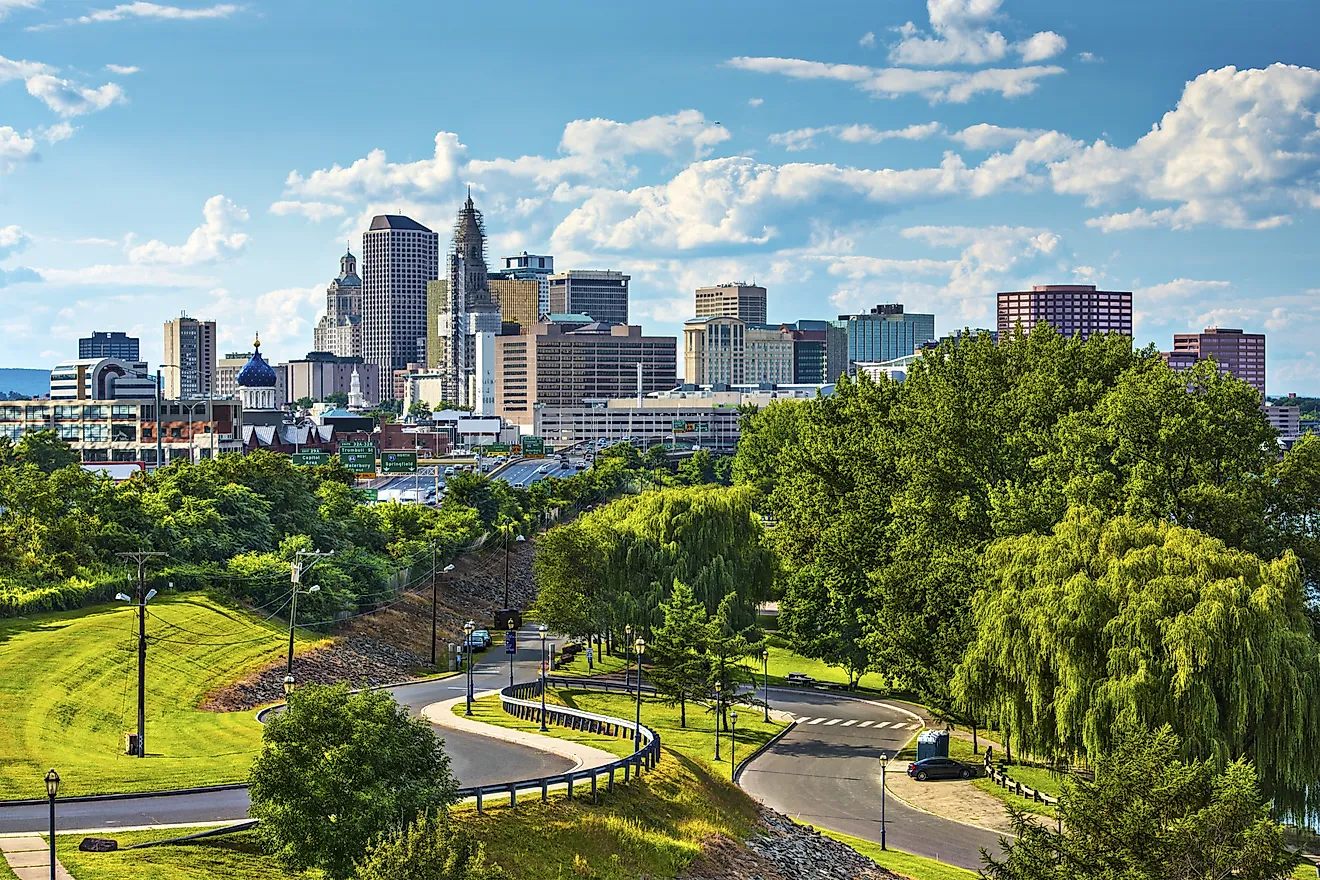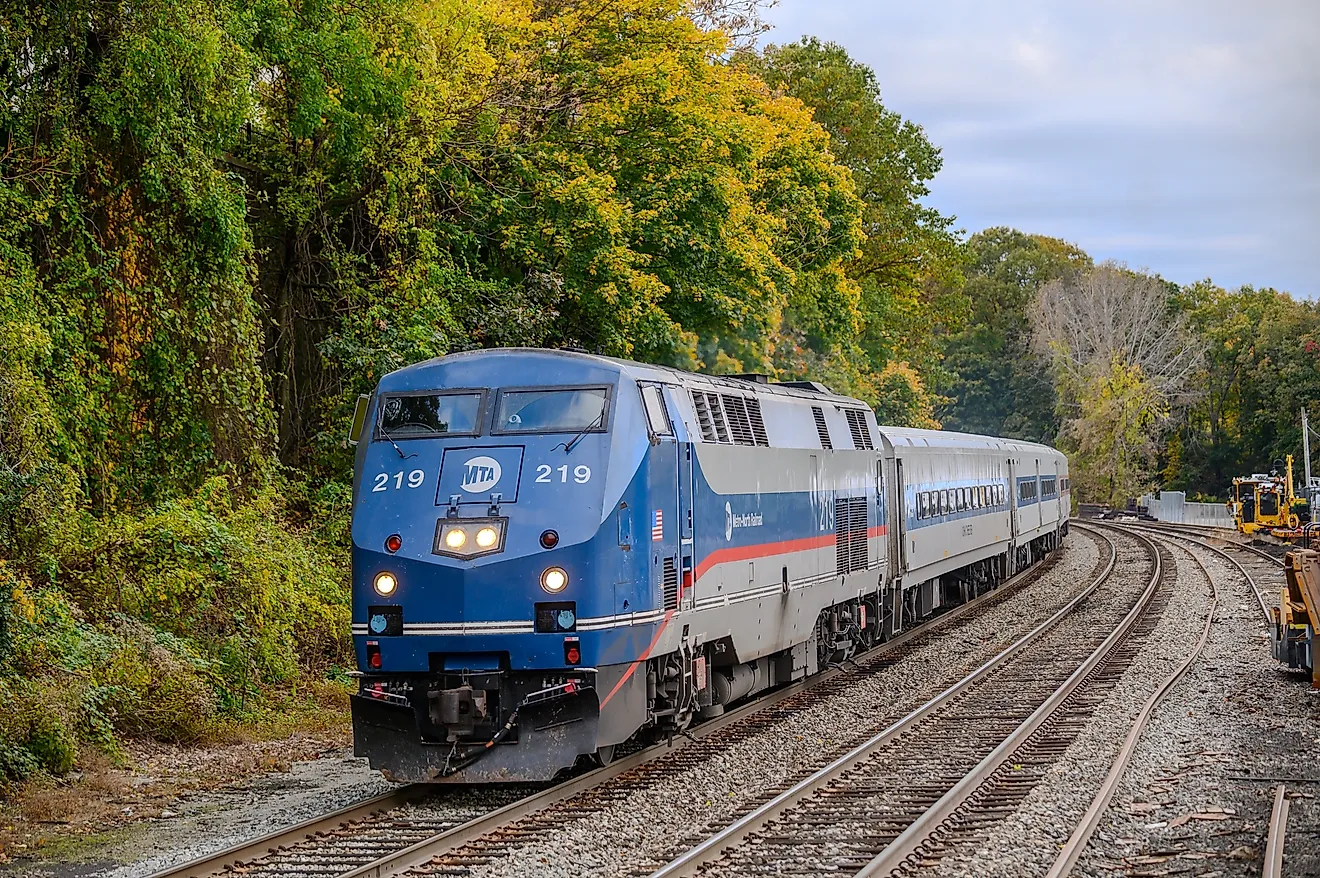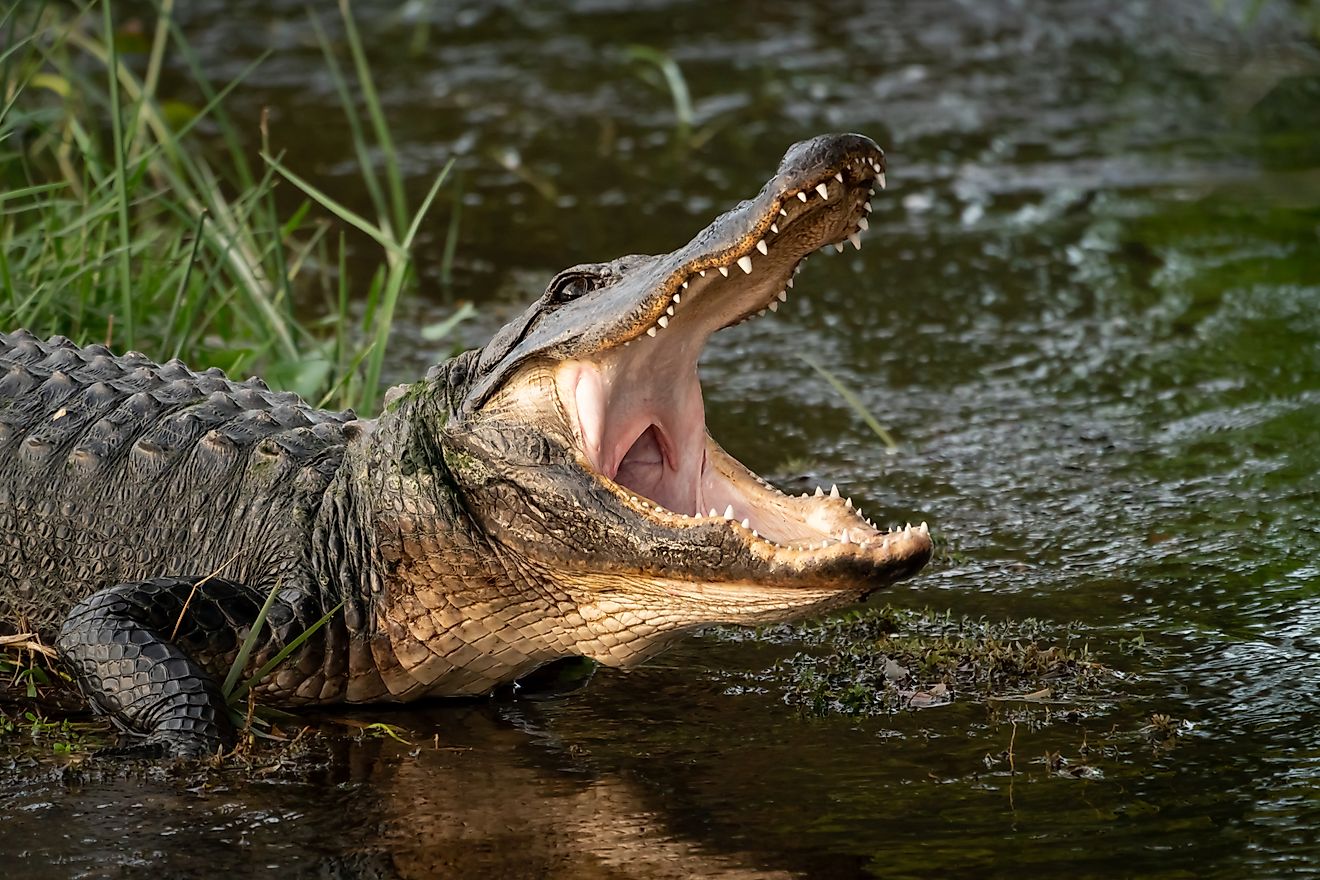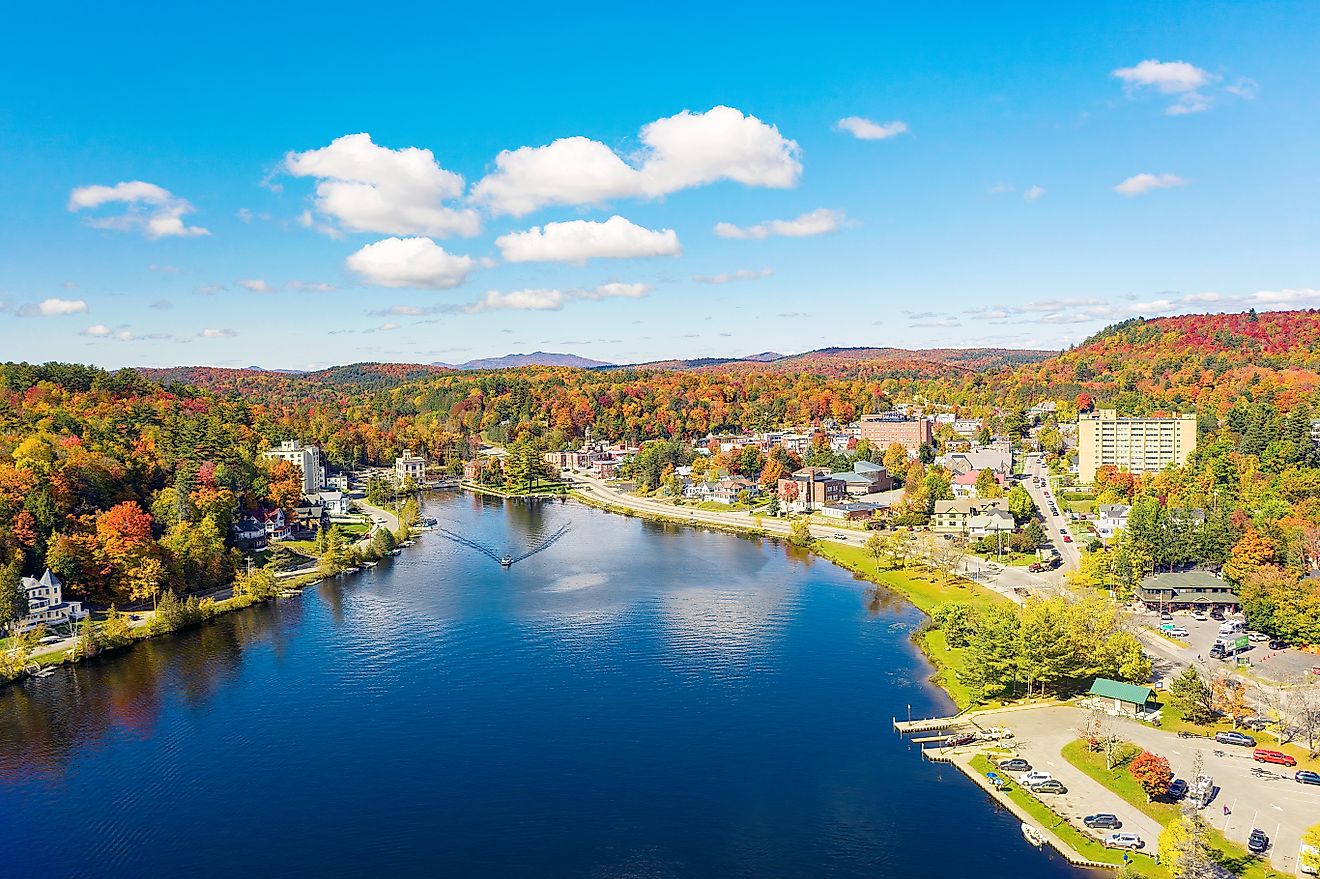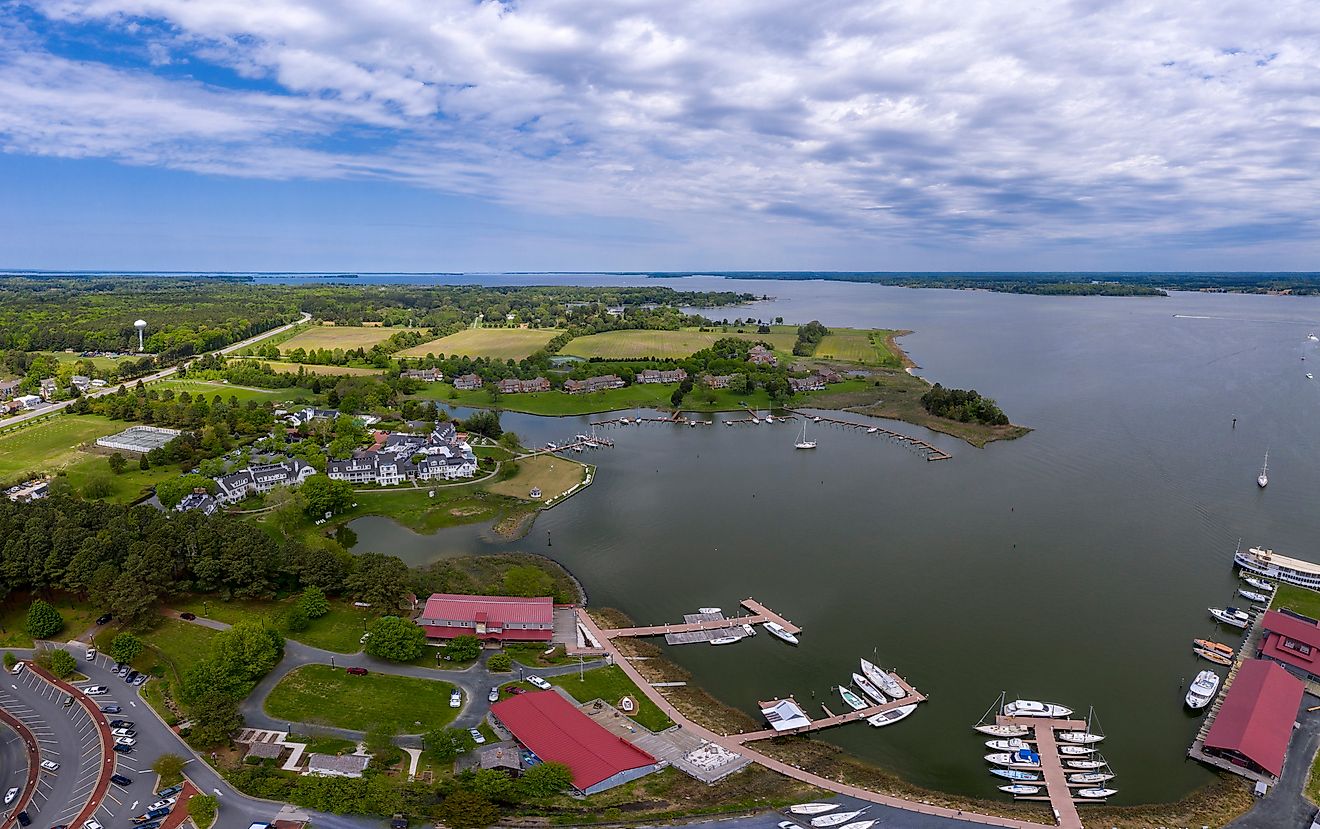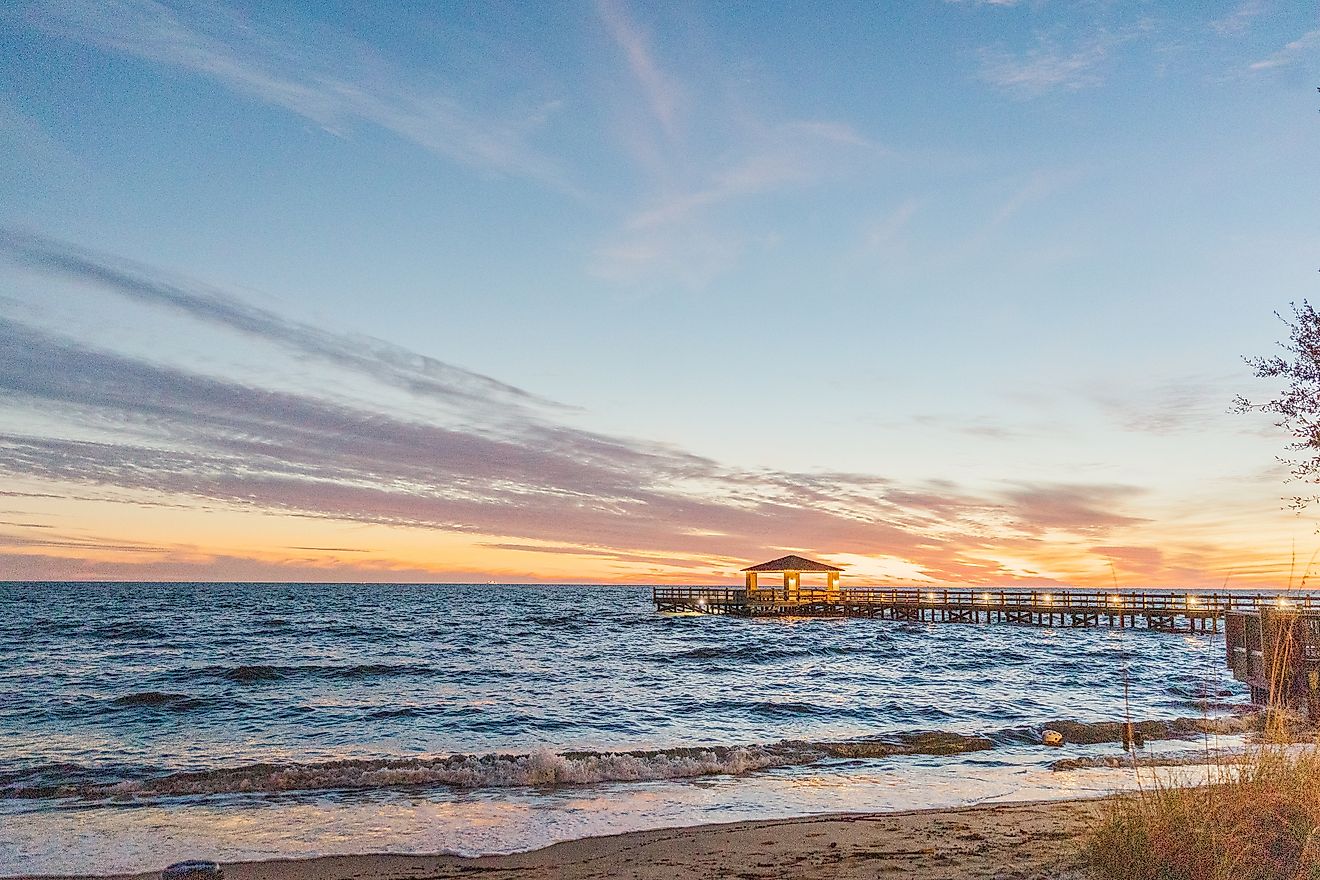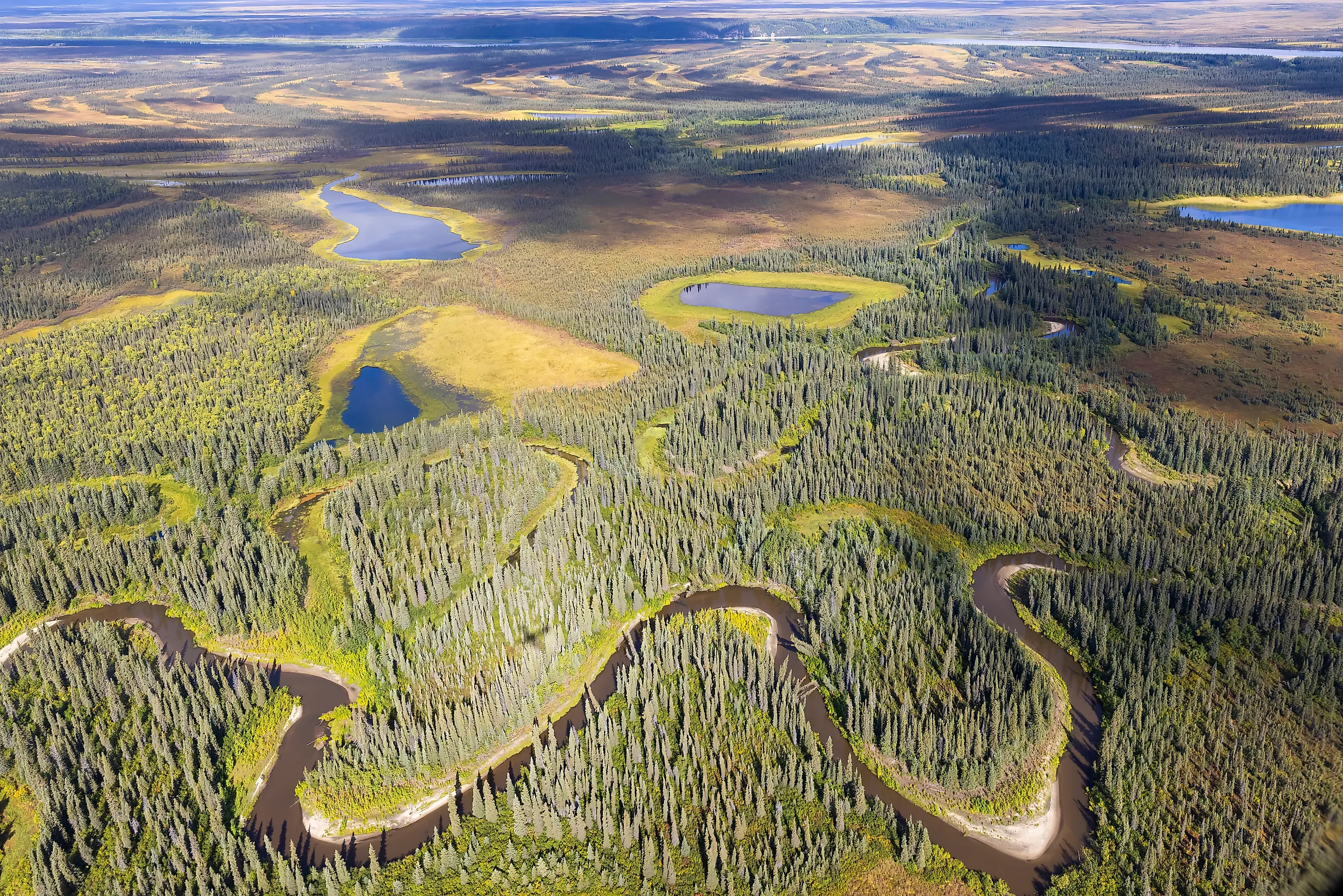
Kobuk Valley National Park’s Migrating Sand Dunes Drift Above Arctic Caribou Trails
Though the U.S. National Parks are (mostly) synonymous with wilderness, some are naturally a little bit wilder than others. And while some visitors like their nature with a few helpful amenities, others won’t be content until they’re the only hiker, paddler, or snowmobiler for miles around. If you fall into the latter category, you’ve got to make your way up to Alaska.
With eight National Parks to explore and only three accessible by road, the Last Frontier truly lives up to its name. And nowhere is that more true than in the otherworldly Kobuk Valley National Park, a 1,750,000-acre wilderness about the size of Delaware, tucked 25 miles north of the Arctic Circle. Here, migrating sand dunes drift above Arctic caribou trails, and the Kobuk River cuts through boreal forest and tundra with hardly a sign of human presence. Sure, it’s a monumental undertaking to get there. But you'll know it was worth every effort when you’re the only human for dozens of miles, watching dunes shimmer under the midnight sun and caribou weave their way across the tundra.
About the Park & Geography
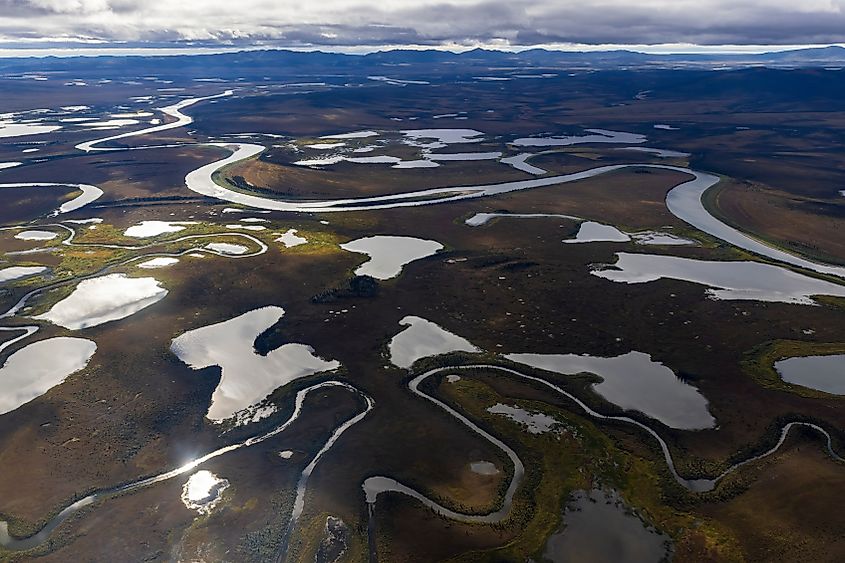
Located in northern Alaska, twenty-five miles north of the Arctic Circle, Kobuk Valley is the second-northernmost National Park. That comes with unique features characteristic of a true Arctic ecosystem that are found in no other park. Located at the latitude where boreal forests begin to transition to Arctic woodland taiga, it’s got landscapes you’d normally only ever see in a nature documentary. And as a result of its extreme isolation, the Inupiaq people native to the Kobuk Valley have been able to continue living off the land just as their ancestors have for thousands of years.
To understand this park, though, you have to know how Arctic ecosystems make out living in some of the world’s harshest climates. And the first thing to know is that much of the ground in the Kobuk Valley is permanently frozen. This layer of frozen soil, fittingly called “permafrost,” keeps the roots of plants from reaching down very far into the soil, so any plants that thrive here have to have shallow roots as well as the ability to withstand extreme cold. That’s why you won’t find many trees in some parts of the park: Kobuk Valley National Park encompasses the northernmost latitudes at which the ground isn’t frozen and trees can take root. Thus, you can see the transition from boreal forest to treeless tundra within the park borders.

The Arctic also favors plants with a short growing season, since the famous “midnight sun” in the summer months quickly gives way to extreme cold and few hours of sunlight in the winter. If you visit this park, it will most likely be in the summer: many National Parks have seasonal closures, but this is one place that’s truly inadvisable to be when winter rolls around.
However, Kobuk Valley National Park is far from barren. In fact, it’s the staging ground for one of the most impressive terrestrial migrations on earth: every spring and fall, hundreds of thousands of arctic caribou migrate to and from their summering grounds in the park. Fish are abundant in the Kobuk River, providing a vital food source for the region’s grizzly bears. Moose, wolves, arctic foxes, and millions of migratory birds also call the Kobuk Valley home. Although the brutal winter sends many of these species packing, the area’s extreme isolation means that animals that’ve been made scarce by human threats elsewhere are much more abundant in Kobuk Valley National Park.
Park History
That’s not to say there’s no human presence at Kobuk Valley National Park—not in the least. With a history stretching back over 10,000 years, the Inupiaq people who call the valley home boast one of the oldest continuous cultures in the Americas. Subsistence hunting and gathering, perfected over millennia, has allowed them to master the art of survival in the frigid Arctic. These traditions continue today, guided by principles of respect for the land and the animals that provide food and supplies.
To protect this extraordinary region, the Kobuk River Valley was first declared a National Monument in 1978. It became a National Park just two years later, in 1980, when its boundaries were expanded. Preservation efforts focused on its pristine rivers, boreal forests, caribou migration routes, archaeological sites, and the famous sand dunes.
What Makes Kobuk Valley National Park So Special?
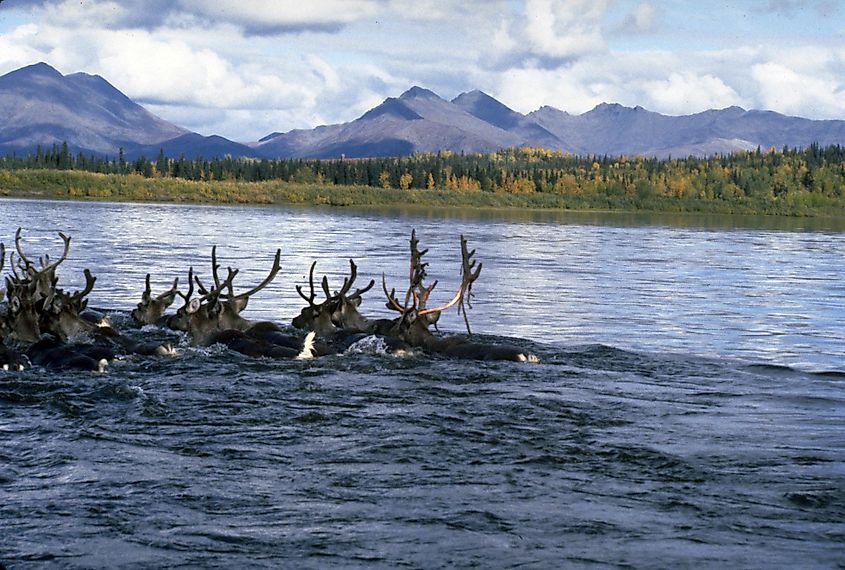
All you have to hear is “Arctic Circle” to understand at least a little bit why Kobuk Valley National Park is such a unique entry on the National Park Service’s roster. But it’s not the only park in the system to fall above the Arctic Circle, showcase otherworldly Arctic tundra, or preserve the lifeways of Arctic-dwelling Native Alaskan peoples. Nor is its wildlife found anywhere else, even though it’s unusually abundant.
There are two things, then, that truly belong to Kobuk Valley and no other park. One is the migration of the Western Arctic Caribou Herd, some 250,000 strong and still following millennia-old routes without impediment by human development. It’s not for nothing that the National Park Service describes this massive movement of animals as “one of the last great migrations left on the planet,” on par with the much more famous annual trek of wildebeests across the Serengeti. This is one natural feature that no other park can claim.
About Those Sand Dunes...
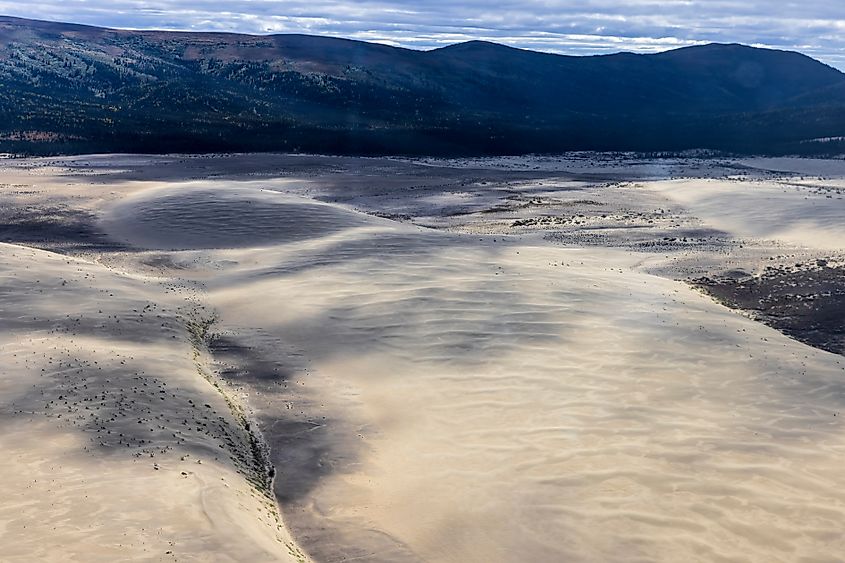
If you were shown a photograph of the Great Kobuk Sand Dunes without explanation, you’d likely assume they belonged to the Sahara or the Arabian Desert. But in reality, they rise in the middle of the Arctic, a striking contrast to the spruce forests and tundra around them. Some dunes climb to 100 feet, constantly reshaped by strong Arctic winds that keep them shifting across the valley floor.
What makes them even more extraordinary is how they interact with life around them. Every spring and fall, the Western Arctic Caribou Herd passes directly across these dunes, their hooves tracing age-old paths that cut through the sand before continuing into the surrounding tundra. Few other places on Earth showcase such a surreal pairing, towering Arctic dunes alive with movement from a quarter-million migrating animals. Scientists believe this migration has followed the same routes for thousands of years, linking the caribou’s survival to the same sandy corridors carved during the Ice Age.
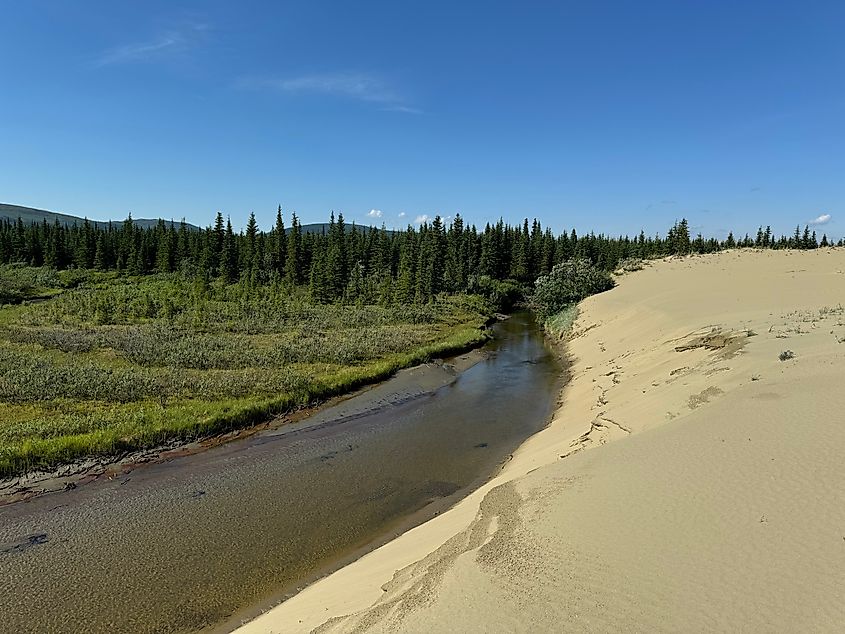
The dunes themselves tell a story just as old. They are remnants of glacial grinding during the last Ice Age, when massive sheets of ice pulverized rock into fine sand. While most of the original 200,000 acres have since been reclaimed by vegetation, about 16,000 acres remain exposed and active today, their golden ridges glowing in summer sunlight or under the eerie glow of the northern lights. Standing atop one of these shifting peaks, watching caribou ripple across the horizon, is perhaps the most vivid way to understand why Kobuk Valley National Park is unlike any other place on the planet.
How to Visit
With so much history and wildlife, Kobuk Valley has plenty to offer. The challenge is simply getting there. This road-inaccessible park requires visitors to charter a boat or small plane, most often from the town of Kotzebue, about 100 miles away. Once dropped off, you’re on your own. Some parks have backcountry areas; Kobuk Valley is backcountry. There are no roads, no facilities, and almost no people. You must bring everything you need.
Remember, this is rough country. Even in summer, unprepared travelers can find themselves in danger from cold, wildlife, or the sheer remoteness of the landscape. Only experienced backcountry explorers should attempt extended stays, and even they should travel with caution.
What to Do
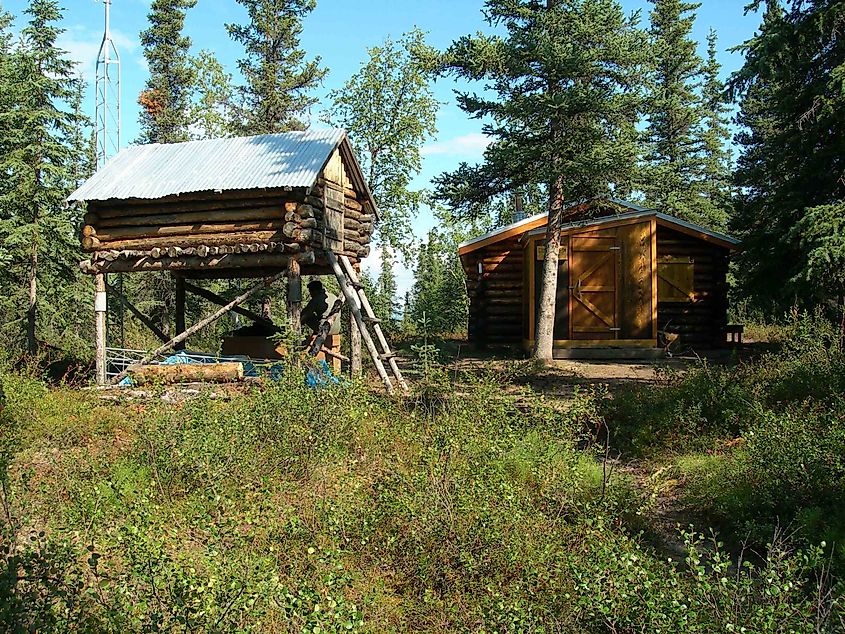
There are no established campgrounds or paved trails here, but that doesn’t mean Kobuk Valley lacks adventure. In fact, this is one of the few national parks where the entire landscape feels like an open invitation to backcountry exploration. The Great Kobuk Sand Dunes are the most popular destination, and hiking out onto their shifting slopes is an unforgettable experience. Most visitors start near the Kobuk River, where planes or boats can drop them off, then trek into the dunes for surreal views of sand stretching into tundra. For a longer outing, the Onion Portage area on the Kobuk River is another well-known route, famed as a travel corridor and an archaeological site where thousands of years of caribou hunting history are layered into the soil.
Beyond these highlights, most activities here are self-guided and require careful planning. Backcountry hiking and camping dominate, with no marked routes beyond the ones you and your pilot agree upon, and a good map and navigational savvy are essential. Fishing in the Kobuk River is world-class, while floating or paddling its winding course offers a rare perspective on the valley’s wildlife. Summer brings near-endless daylight, making it the best season for hiking, spotting caribou, and even stargazing under an Arctic sky where the northern lights sometimes shimmer in late August.
A Park For The Bold
Even the most adventurous National Park enthusiasts may never set foot in Kobuk Valley. Out of 63 U.S. National Parks, it ranked fourth-to-last in visitation in 2023. But those who make the effort are rewarded with scenery and wildlife that feel like a glimpse back to pre-industrial Earth. Kobuk Valley National Park’s migrating sand dunes drift above Arctic caribou trails, creating one of the most surreal natural pairings anywhere in the world. If true wilderness is what you crave, you’ll find it here, in the vast quiet, the endless skies, and the wild heart of Alaska.

